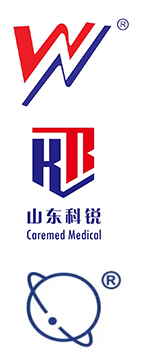PRODUCT CATEGORY:
Syringes

-

Floor Area
0m2 -

Patent Certificate
0 -

Employees
0+
-
Jun 22,2025 - Posted Admin
Insulin is one of the important drugs for daily management of diabetic patients, and the accuracy of insulin injection is directly related t...READ MORE + -
Jun 15,2025 - Posted Admin
In the field of modern medicine, blood transfusion, as an important medical method, is widely used in multiple scenarios such as surgery, tr...READ MORE + -
Jun 08,2025 - Posted Admin
In modern medicine, Infusion Set is known as an important life channel connecting the drug solution with the patient's body. It is widely us...READ MORE + -
Jun 01,2025 - Posted Admin
During dental treatment, dental needles are a vital but often overlooked tool. They are used in conjunction with dental syringes to inject l...READ MORE + -
May 22,2025 - Posted Admin
In the ever-evolving landscape of global healthcare, the demand for safe, reliable, and high-performance medical equipment has never been gr...READ MORE +
Our mission is to offer "High Quality" & "Good Service" & "Fast Delivery'to help our clients to gain more profits.
What are the functions of syringe barrel and needle?
A syringe is a widely used needle tool in the medical field and consists of two parts: a syringe and a needle. The main function of a syringe is to accurately measure, draw and inject liquid medications.
1. Function of syringe:
Drug Injection: Syringe barrels are widely used to inject drugs into patients, including vaccines, antibiotics, analgesics, etc. Through subcutaneous, intramuscular or intravenous injection, the drug can quickly and effectively enter the patient's blood system to treat or relieve symptoms.
Fluid extraction: Syringe barrels can also be used to withdraw fluid samples such as blood, tissue fluid, or other biological fluids from patients. These samples are often used to perform diagnostics, laboratory tests, or research to learn about a patient's health or disease.
Precise dose control: The syringe barrel is precisely designed to accurately control the dose of the drug. This is important to ensure patients receive appropriate treatment without too much or too little.
Vaccination: In the field of preventive medicine, syringes are widely used for vaccination to increase the immunity of a population against specific diseases.
2. Function of needle:
Medication Delivery: The syringe needle is responsible for pushing the medication from the syringe into the patient's body. By piercing the skin, it allows drugs to enter directly into the blood, muscle or subcutaneous tissue, allowing for fast and accurate drug delivery.
Tissue Sampling: In some medical exams and laboratory tests, syringe needles are used to draw tissue, fluid, or blood samples from patients. These samples are often used to diagnose disease, monitor health conditions, or conduct research.
Vaccination: A syringe needle is used to administer vaccines by piercing the skin and injecting the vaccine into the patient's body to boost the immune system's defenses against specific diseases.
Precise Penetration: Syringe needles are often designed with great precision to ensure minimal pain and tissue damage when penetrating the skin. Some needles also have special coatings or edge designs to further reduce the sting.
The comprehensive function of the syringe:
Precisely control the dosage: The structure and scale of the syringe enable medical staff to precisely control the dosage of the drug during treatment, ensuring that patients receive the correct therapeutic effect.
Avoid cross-contamination: Using disposable needles and syringes helps prevent cross-contamination because they are typically discarded after use, reducing the risk of spreading pathogens.
Improve treatment efficiency: The design of the syringe enables medical staff to inject drugs quickly and safely, improving treatment efficiency.
Syringe barrels and needles serve as indispensable tools in medical practice, providing patients with effective medication through precise measurement and safe injection. At the same time, its structural design also helps reduce risks to patients and medical staff, ensuring the safety and controllability of the medical process.



 English
English Français
Français русский
русский Español
Español


































